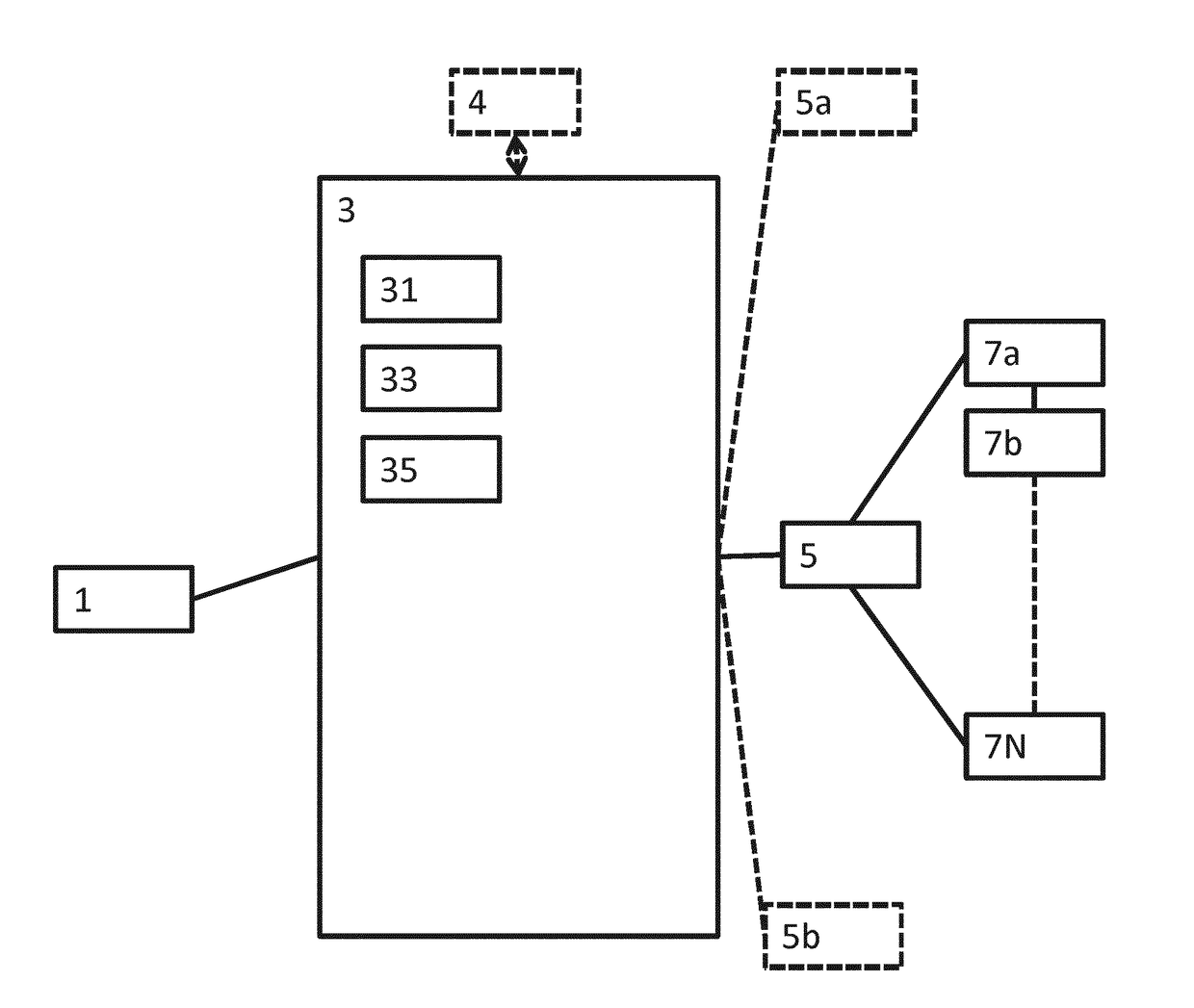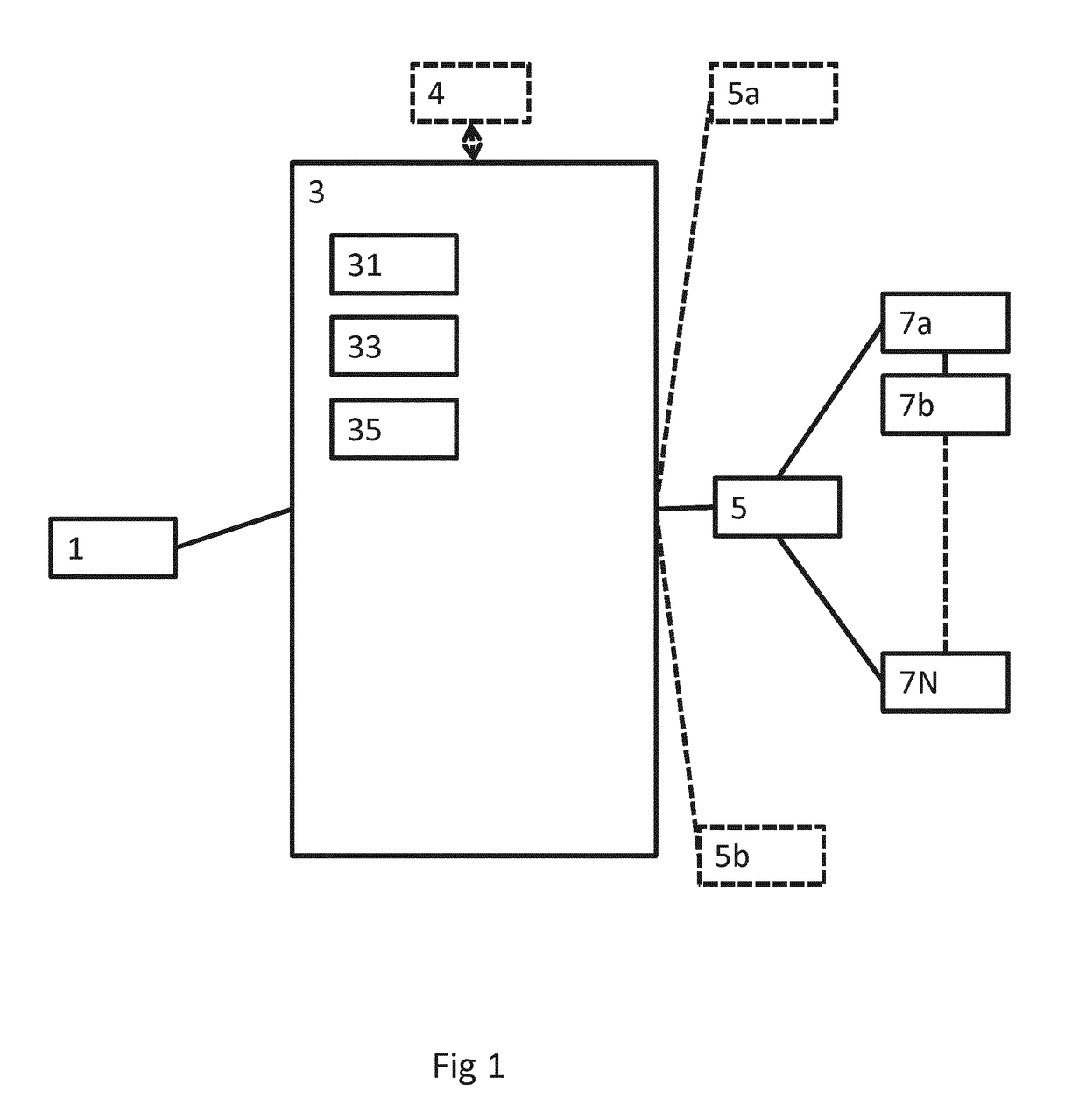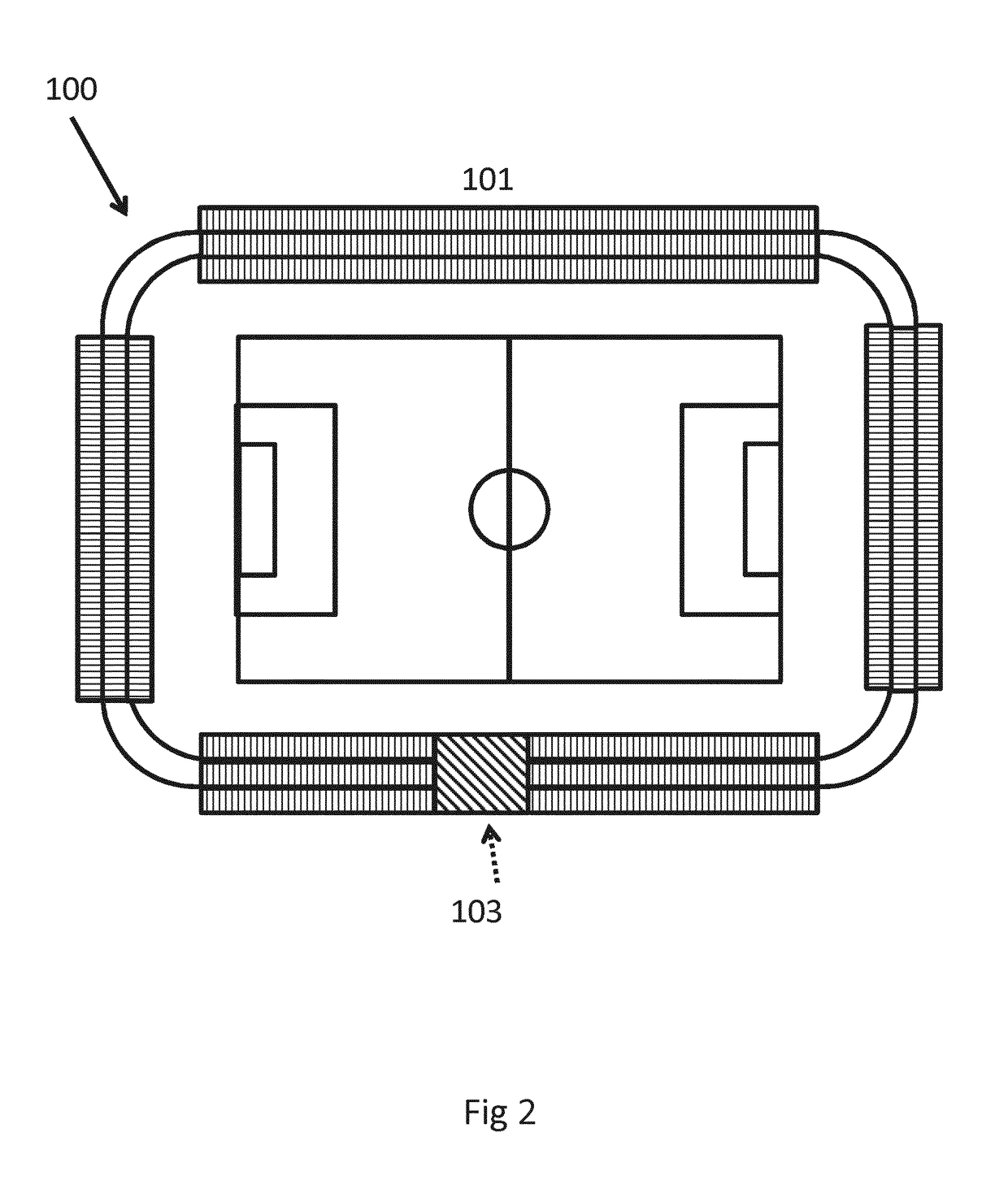Commissioning system for a lighting system
a lighting system and commissioning system technology, applied in the direction of electroluminescent light sources, electric lighting sources, close-range type systems, etc., can solve the problems of cumbersome process, high cost and error rate, and difficulty in identifying the exact physical location of a specific luminaire in a long row, so as to facilitate the detection of the second visual pattern, the effect of easy identification
- Summary
- Abstract
- Description
- Claims
- Application Information
AI Technical Summary
Benefits of technology
Problems solved by technology
Method used
Image
Examples
Embodiment Construction
[0044]The concepts as described herein show a commissioning system for a lighting system to enable an efficient determination of logical addresses to lighting units or luminaires within a complex lighting system. Although the following examples have been described with respect to stadium or arenas such as football stadium, it is understood that the commissioning system and methods described herein could be applied to various large scale lighting applications such as lighting for swimming pool arenas and velodromes.
[0045]With respect to FIG. 1 an example lighting system is shown incorporating a commissioning system for a lighting system according to some embodiments.
[0046]The lighting system may comprise lighting controllers 5, shown in FIG. 1 as three lighting controllers 5, 5a, 5b. The lighting controllers 5, 5a, 5b are each configured to control a clustered group (or set) of lighting units 7a, . . . 7N. It is understood that the controllers 5, 5a, 5b can be any suitable lighting c...
PUM
 Login to View More
Login to View More Abstract
Description
Claims
Application Information
 Login to View More
Login to View More - R&D
- Intellectual Property
- Life Sciences
- Materials
- Tech Scout
- Unparalleled Data Quality
- Higher Quality Content
- 60% Fewer Hallucinations
Browse by: Latest US Patents, China's latest patents, Technical Efficacy Thesaurus, Application Domain, Technology Topic, Popular Technical Reports.
© 2025 PatSnap. All rights reserved.Legal|Privacy policy|Modern Slavery Act Transparency Statement|Sitemap|About US| Contact US: help@patsnap.com



